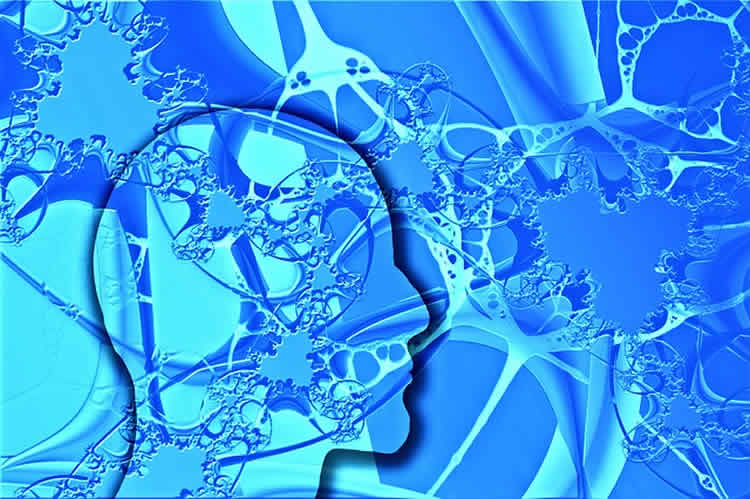Discovery may lead to relief for victims of a range of neurological disorders.
University of Toronto biologists leading an investigation into the cells that regulate proper brain function, have identified and located the key players whose actions contribute to afflictions such as epilepsy and schizophrenia. The discovery is a major step toward developing improved treatments for these and other neurological disorders.
“Neurons in the brain communicate with other neurons through synapses, communication that can either excite or inhibit other neurons,” said Professor Melanie Woodin in the Department of Cell and Systems Biology at the University of Toronto (U of T), lead investigator of a study published today in Cell Reports. “An imbalance among the levels of excitation and inhibition – a tip towards excitation, for example – causes improper brain function and can produce seizures. We identified a key complex of proteins that can regulate excitation-inhibition balance at the cellular level.”
This complex brings together three key proteins – KCC2, Neto2 and GluK2 – required for inhibitory and excitatory synaptic communication. KCC2 is required for inhibitory impulses, GluK2 is a receptor for the main excitatory transmitter glutamate, and Neto2 is an auxiliary protein that interacts with both KCC2 and GluK2. The discovery of the complex of three proteins is pathbreaking as it was previously believed that KCC2 and GluK2 were in separate compartments of the cell and acted independently of each other.

“Finding that they are all directly interacting and can co-regulate each other’s function reveals for the first time a system that can mediate excitation-inhibition balance among neurons themselves,” said Vivek Mahadevan, a PhD candidate in Woodin’s group and lead author of the study.
Mahadevan and fellow researchers made the discovery via biochemistry, fluorescence imaging and electrophysiology experiments on mice brains. The most fruitful technique was the application of an advanced sensitive gel system to determine native protein complexes in neurons, called Blue Native PAGE. The process provided the biochemical conditions necessary to preserve the protein complexes that normally exist in neurons. Blue Native PAGE is advantageous over standard gel electrophoresis, where proteins are separated from their normal protein complexes based on their molecular weights.
“The results reveal the proteins that can be targeted by drug manufacturers in order to reset imbalances that occur in neurological disorders such as epilepsy, autism spectrum disorder, schizophrenia and neuropathic pain,” said Woodin. “There is no cure for epilepsy; the best available treatments only control its effects, such as convulsions and seizures. We can now imagine preventing them from occurring in the first place.”
“It was the cellular mechanisms that determine the excitation-inhibition balance that needed to be identified. Now that we know the key role played by KCC2 in moderating excitatory activity, further research can be done into its occasional dysfunction and how it can also be regulated by excitatory impulses,” said Mahadevan.
Other investigators involved in the research included scientists at the Hospital for Sick Children Research Institute, Vanderbilt University School of Medicine, Jewish General Hospital at McGill University, and the Institute of Biomedicine, Anatomy at the University of Helsinki. The findings are reported in the article “Kainate Receptors Coexist in a Functional Complex with KCC2 and Regulate Chloride Homeostasis in Hippocampal Neurons” published online June 5 in Cell Reports. The research was supported by funding from the Canadian Institutes of Health Research, the National Institutes of Health, and the Academy of Finland.
Submitted to NeuroscienceNews.com by Melanie Woodin
Contact: Melanie Woodin – University of Toronto
Source: University of Toronto press release
Image Source: The image is credited to geralt and is in the public domain
Original Research: Full open access research for “Kainate Receptors Coexist in a Functional Complex with KCC2 and Regulate Chloride Homeostasis in Hippocampal Neurons” by Vivek Mahadevan, Jessica C. Pressey, Brooke A. Acton, Pavel Uvarov, Michelle Y. Huang, Jonah Chevrier, Andrew Puchalski, Caiwei M. Li, Evgueni A. Ivakine, Matti S. Airaksinen, Eric Delpire, Roderick R. McInnes, and Melanie A. Woodin in Cell Reports. Published online May 30 2014 doi:10.1016/j.celrep.2014.05.022
Kainate Receptors Coexist in a Functional Complex with KCC2 and Regulate Chloride Homeostasis in Hippocampal Neurons
KCC2 is the neuron-specific K+-Cl− cotransporter required for maintaining low intracellular Cl−, which is essential for fast inhibitory synaptic transmission in the mature CNS. Despite the requirement of KCC2 for inhibitory synaptic transmission, understanding of the cellular mechanisms that regulate KCC2 expression and function is rudimentary. We examined KCC2 in its native protein complex in vivo to identify key KCC2-interacting partners that regulate KCC2 function. Using blue native-polyacrylamide gel electrophoresis (BN-PAGE), we determined that native KCC2 exists in a macromolecular complex with kainate-type glutamate receptors (KARs). We found that KAR subunits are required for KCC2 oligomerization and surface expression. In accordance with this finding, acute and chronic genetic deletion of KARs decreased KCC2 function and weakened synaptic inhibition in hippocampal neurons. Our results reveal KARs as regulators of KCC2, significantly advancing our growing understanding of the tight interplay between excitation and inhibition.
“Kainate Receptors Coexist in a Functional Complex with KCC2 and Regulate Chloride Homeostasis in Hippocampal Neurons” by Vivek Mahadevan, Jessica C. Pressey, Brooke A. Acton, Pavel Uvarov, Michelle Y. Huang, Jonah Chevrier, Andrew Puchalski, Caiwei M. Li, Evgueni A. Ivakine, Matti S. Airaksinen, Eric Delpire, Roderick R. McInnes, and Melanie A. Woodin in Cell Reports. Published online May 30 2014 doi:10.1016/j.celrep.2014.05.022






